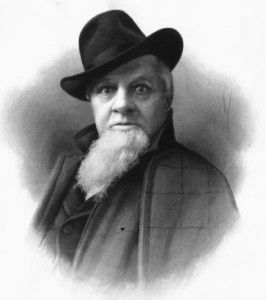Workers are now halfway through dismantling the smokestacks that for years crowned the Schwartz Chemical Co. building in Hunters Point. Neighbors campaigned to stop the demolition and landmark the building. But now, that opposition is moot.
A postcard campaign urging the New York City Landmarks Preservation Commission to protect the building at 50-09 2nd Street came too late, said participant Monte Antrim.
“By the time we got the cards produced, the permit process was pretty far along,” Antrim said in an e-mail, referring to the city permit required to demolish the stacks.
Antrim also said that a few neighbors didn’t even realize the building had been sold until the demolition began.
Still, sentiments about the stacks run deep in this tiny corner of Long Island City, where some fear the rezoning plan approved last August could accelerate the pace of change in the area.
Discussions have been roiling between those who call the stacks an eyesore and those who might call them an icon in online chat rooms, on Web logs and on the surrounding sidewalks. Some neighbors applaud their removal, while others wince as workers take the stacks apart, one steel panel at a time.
Walking home from evening services at nearby St. Mary’s church, Anna Mangino, a lifelong Hunters Point resident, said she had mixed feelings.
“When we were kids, the soot came down from those stacks,” Mangino said. “It’s nostalgic. When we played jacks on the stoop we had to blow the soot away.”
Her neighbor, Vincent Dimizio — also a lifelong resident — recalled the building’s heyday as the Long Island City Power House. Built in 1905 by renowned architects McKim, Mead and White, the plant powered the Pennsylvania Railroad with one of the country’s first steam turbine operations. The 275-foot stacks belched their last clouds of soot long ago.
“The soft coal came in on barges, and it landed over there,” Dimizio said, pointing down 51st Avenue. “A lot of it used to fall off and everything was black all the time.”
According to city records, Brooklyn-based CGS Developers bought the privately owned property and engaged architect Karl Fischer to design the condominiums that will go up where the stacks once stood.
CGS’ Cheskel Schwimmer said the new development, which he expects to be completed in about 20 months, will go up right on top of the old building.
“I’m trying to do the right thing,” Schwimmer said, adding that he considered incorporating the stacks right into the new development’s design. But building height requirements, plus the cost of reinforcing the stacks, forced the developer to have them removed, he said.
In their place, nearly 200 residential units, “probably condos,” Schwimmer said, will rise in glass and aluminum.
That change is necessary, according to Chris Morgan, 34, who moved into a high rise apartment building across from the old plant three years ago.
“The people who want to preserve it, I respect that,” Morgan said while strolling up the neighborhood’s East River piers. “I fall into that camp. The problem is, you can’t have a structure like this remain vacant. It’s like watching something rot and decompose.”
Indoor tennis courts have been occupying one of the building’s floors for years, even as windows crack and crash to the sidewalk and graffiti wraps around the front and back of the top floors. But for now, only workers in hard hats occupy those floors beneath the stacks, which currently look more like telescopes frozen in mid-collapse.
Kristin Espeland is a freelance writer.






























